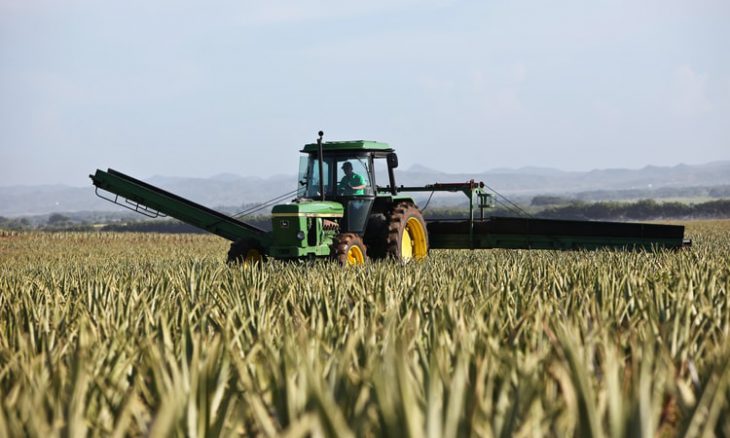Heavy regulations on farmers in America cause a lot of uncertainty about the future.
PRAY FIRST for American farmers and their families. Their work directly impacts market prices, food supplies, the nation’s economic stability, and what we eat.
You cause the grass to grow for the livestock and plants for man to cultivate, that he may bring forth food from the earth. – Psalm 104:14
Farmers Around the Globe Protest
Last week, farmers in Germany blocked access to Berlin with tractors and trucks, protesting government cuts in agricultural subsidies and tax breaks for diesel fuel used in farming.
In October, farmers in the Netherlands protested with tractors clogging the highways protesting against an announcement by the deputy prime minister that said the government needed to take “drastic measures” to reduce nitrogen emissions and called for buying out and shutting down livestock farms.
In Australia, farmers protested in Melbourne over planned power grids and transmission line construction across their land.
In Belgium, France, and Spain farmers are voicing their frustration with governmentally imposed environmental reforms.
Similar disruptions have been occurring on a global scale due to increased regulations on farmers.
Despite its immense agricultural production, the United States still remains an importer of many foodstuffs from other parts of the world. Increases in costs of production or the limited production of items will have a direct impact on American household budgets, how and what Americans eat, and how Americans prepare their food.
U.S. Agricultural Regulations
In November, Congress extended the Agriculture Improvement Act of 2018, also known as the “Farm Bill,” through to September 30, 2024. Congress is expected to focus on a new five-year farm bill by end of 2024, but with Congress looking for places to cut spending, and with the pressures of the green agenda being applied by the administration, America’s farmers and ranchers are watching.
Details of the farm bill often take cues from other federal regulations. U.S. government regulations on farmers today have both positive and negative effects, depending on the type, scope, and implementation of the regulations. Helpful in cases like the Packers and Stockyards Act and Food Safety Modernizaion Act. But it can also present more challenges, especially in the face of environmental regulations such as the Clean Water Act or the Organic Foods Production Act. The Environmental Protection Agency continues to call for reducing emissions from diesel engines, including from older engines. Often, farmers in violation receive citations and fines.
A climate summit held last year in Dubai included focused discussions on the links between agricultural systems and climate change. At that meeting, U.S. Secretary of Agriculture Tom Vilsack said, “We must address the connection between global food systems, agriculture and the climate. Together we must build a global food system that is fit for the future. … [There must be a] shared commitment to accelerating investments in transformative food systems and climate-smart agricultural investments.”
The Farmland for Farmers Act of 2023 was introduced in July 2023, which aimed to limit corporate and foreign ownership of U.S. farmland and protect the interests of independent family farmers. It also sought to reform existing federal policies and programs. The bill was endorsed by several farm groups and lawmakers, and was referred to the Committee on Agriculture, Nutrition, and Forestry, but has not received a hearing or vote.
U.S. Farmland Ownership, Debt, and Competition
In addition to ever-increasing regulations and policies, farmland ownership in the United States has changed in several ways over the past decade. Farmland has become more concentrated and specialized, leading to larger farms dominating production and smaller farms facing more challenges and barriers to entry. Farmland has become more rented and leased, with about 40 percent of farmland owned by non-operator landlords, who may have different goals and preferences than farmers.
In 2021, net farm income increased 19.5% from 2020, however, farm debt also increased as debt-to-asset ratio rose to 13.9%, indicating a higher financial risk for farmers.
U.S. farms vary widely in terms of their size, ownership, organization, and specialization. In 2019, there were 2.02 million farms in the U.S., with an average size of 444 acres. About 90% of farms were classified as small and accounted for 22% of total production. About 10% of farms were classified as large and accounted for 78% of total production.
Over time, larger farms have gained more market power and economies of scale. Between 1987 and 2017, the share of total production by the largest 4% of farms increased from 47% to 68%, while the share of total production by the smallest 76% of farms decreased from 15% to 4%.
Foreign purchases of land have also increased in the past decade, especially in areas with high-value crops or livestock. According to the USDA, foreign investors held 35.2 million acres of U.S. agricultural land as of 2019, which is about 2.6 percent of all privately held agricultural land and 1 percent of all land in the United States.
So, How are U.S. Farmers Managing?
One fourth-generation U.S. farmer recently wrote, “Virtually every action I take as a farmer is regulated. If I till the soil, I’m required to leave 30% of the residue on the surface anywhere that the ground is subject to erosion. Every pesticide I use comes with a small book of regulations about how it can be used. Violating those rules is a federal crime. I’m required to attend training classes every three years on how to use those pesticides. I take training every four years for fertilizer application, and my equipment is inspected every three years.
“The seed I plant is regulated, the fuel I use is subjected to a slew of federal regulations, the most egregious of which are largely responsible for the increase in algae blooms since 2008.
“There are, in fact, strict regulations about the quality of grain that I can offer for sale. Most of the time I far exceed the minimums, but I’ve had to spread grain back in the field because it didn’t meet the quality standards.
“And you get all these answers from people who’ve never worked in farming, saying that we’re not regulated enough.”
At present, despite frustrations, there are no public indicators that American farmers have the same level of discontent with the government as those in Europe and Australia. But a wobble in fuel costs, a reduction in government support, increased strident rules out of the EPA, when combined with the unhappiness of the American people at food costs, could culminate in the same revolutionary spirit and protests.
HOW THEN SHOULD WE PRAY:
— Pray for America’s farmers to be good stewards of the land and of the environment as they continue with the best production the Earth can give. “You have given him dominion over the works of your hands; you have put all things under his feet, all sheep and oxen, and also the beasts of the field, the birds of the heavens, and the fish of the sea, whatever passes along the paths of the seas. Psalm 8:6-8
— Pray for regulators to seek the right balance between environmental protection and not excessively burdening those who feed the nation. A ruler who lacks understanding is a cruel oppressor, but he who hates unjust gain will prolong his days.” Proverbs 28:16.
CONSIDER THESE ITEMS FOR PRAYER:
- Pray for the farmers and others across the world whose livelihoods are impacted by regulations.
- Pray for researchers who are looking for new technologies that will enable them to help farmers and ranchers optimize their business processes and lower air pollution levels.
- Pray for consumers to be wise in their selections of health-sustaining foods.
- Pray for Congress as they evaluate any new regulations on U.S. farmers and the new farm bill later this year.
Sources: Scripps News, Shipman & Goodwin LLP, Newsweek, Daily Mail, The Guardian, Gateway Pundit, X, Sydney Morning Herald, TCN, DW, The Economist, Politico, Department of Agriculture, CNBC, Quora, Inside Climate News, The Medialine, Cato Institute, American Farm Bureau Federation, Reuters









